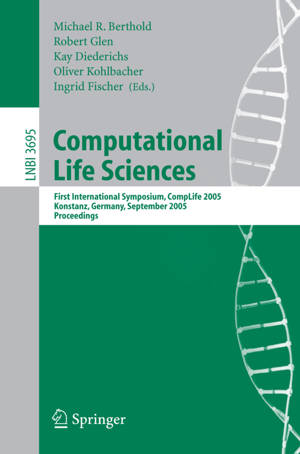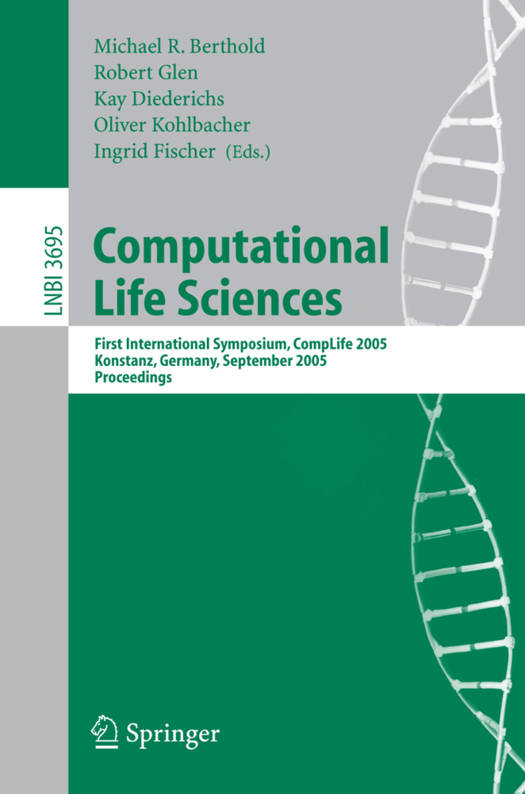
- Retrait gratuit dans votre magasin Club
- 7.000.000 titres dans notre catalogue
- Payer en toute sécurité
- Toujours un magasin près de chez vous
- Retrait gratuit dans votre magasin Club
- 7.000.0000 titres dans notre catalogue
- Payer en toute sécurité
- Toujours un magasin près de chez vous
Computational Life Sciences
First International Symposium, Complife 2005, Konstanz, Germany, September 25-27, 2005, Proceedings
83,95 €
+ 167 points
Description
The integration of knowledge in the life sciences is continuing apace with ev- increasingimportancebeing placedoncomputer-basedmethodsofdata capture, analysis, and knowledge representation. Today, our many di?erent sciences are providing us with a sea of information: it is the handling of this in?ux that is becoming a key discovery and regulatory question. The solutions to these problems will result in advancements to all of the involved sciences and will be highly in?uential both in the selection of the areas scientists seek to investigate and also on their success. For this to happen, it is crucial to establish an open and lively exchange between computer scientists, biologists, and chemists. To encourage precisely this type of exchange, crossing the borders of the sciences, we organized the 1st Symposium on Computational Life Science in Konstanz, Germany(September 25 27,2005). Themainobjectiveofthesymposiumwasto formbridges, bringingtogetherscientistsfromavarietyofdisciplinestoexchange ideas and research e?orts and to talk about the problems in areas of research that up until now have not been visible at an interdisciplinary level. Our conference program shows that the scienti?c mix worked out very well. From 49 submissions, 21 were selected for presentation at the symposium, c- ering areas ranging from high-level system biology to data analysis related to mass spec traces. As a supplement to the regularconference program, we dedicated one section to papers presentedinthe frameworkof a workshoponDistributed Data Mining in the Life Sciences (LifeDDM), organized by Giuseppe Di Fatta."
Spécifications
Parties prenantes
- Editeur:
Contenu
- Nombre de pages :
- 280
- Langue:
- Anglais
- Collection :
- Tome:
- n° 3695
Caractéristiques
- EAN:
- 9783540291046
- Date de parution :
- 16-09-05
- Format:
- Livre broché
- Format numérique:
- Trade paperback (VS)
- Dimensions :
- 156 mm x 234 mm
- Poids :
- 412 g

Les avis
Nous publions uniquement les avis qui respectent les conditions requises. Consultez nos conditions pour les avis.





